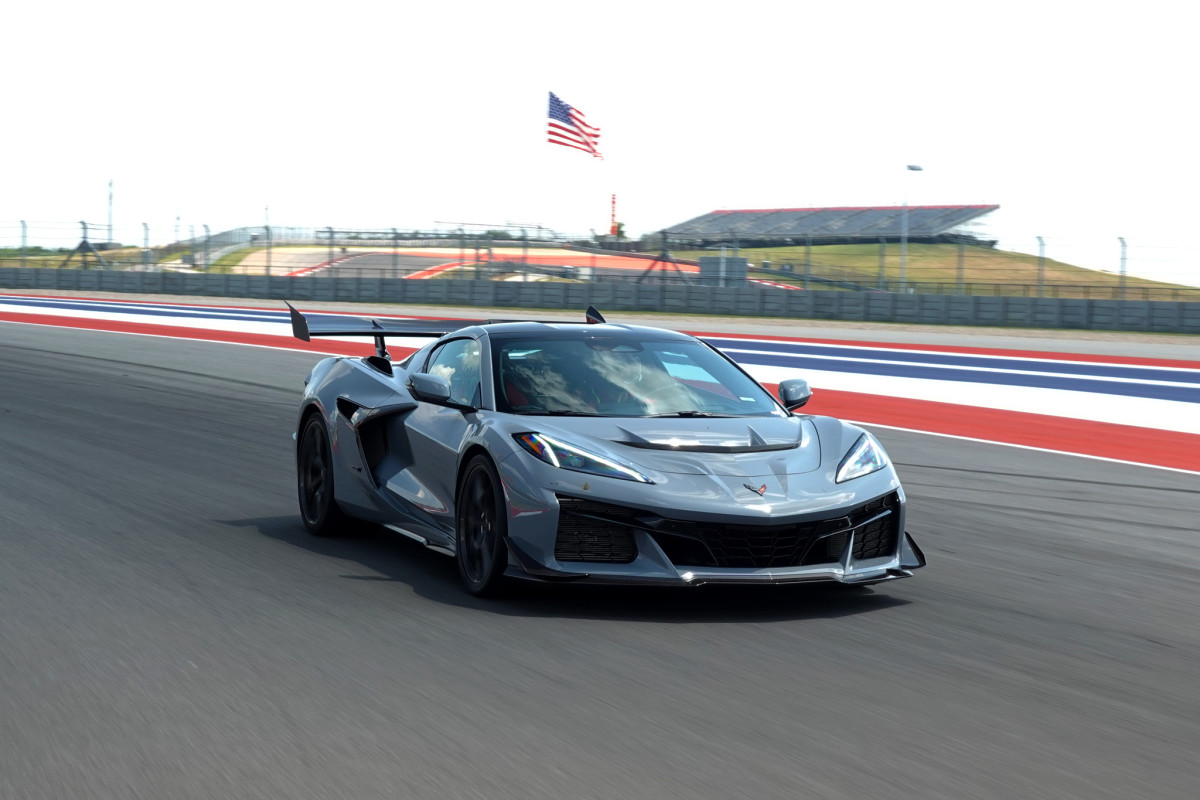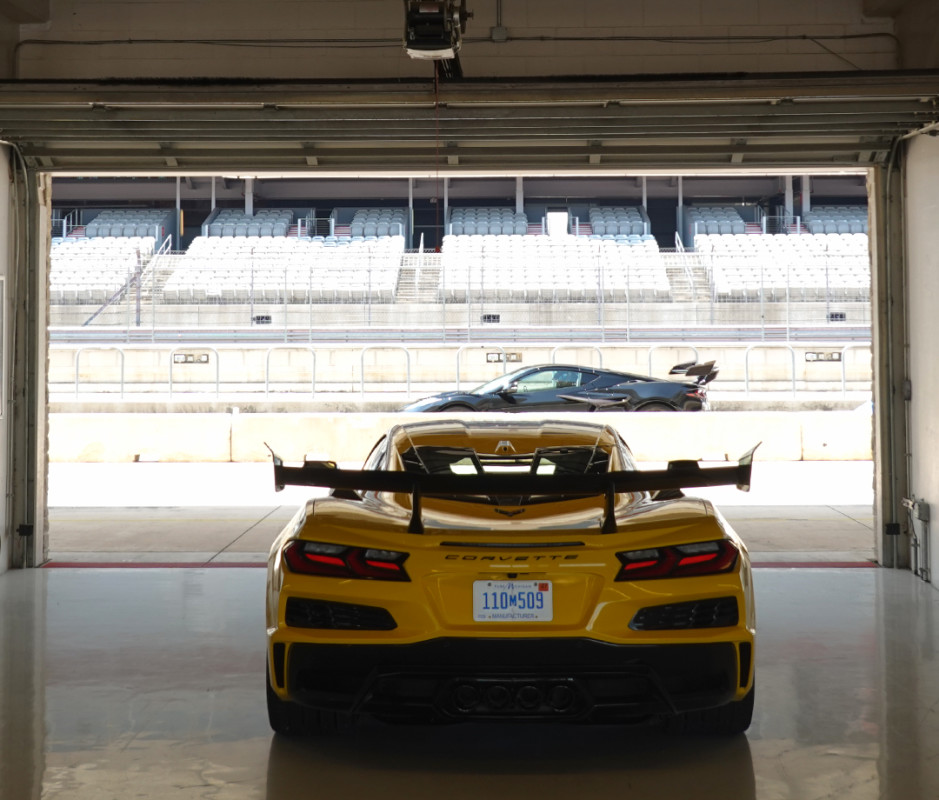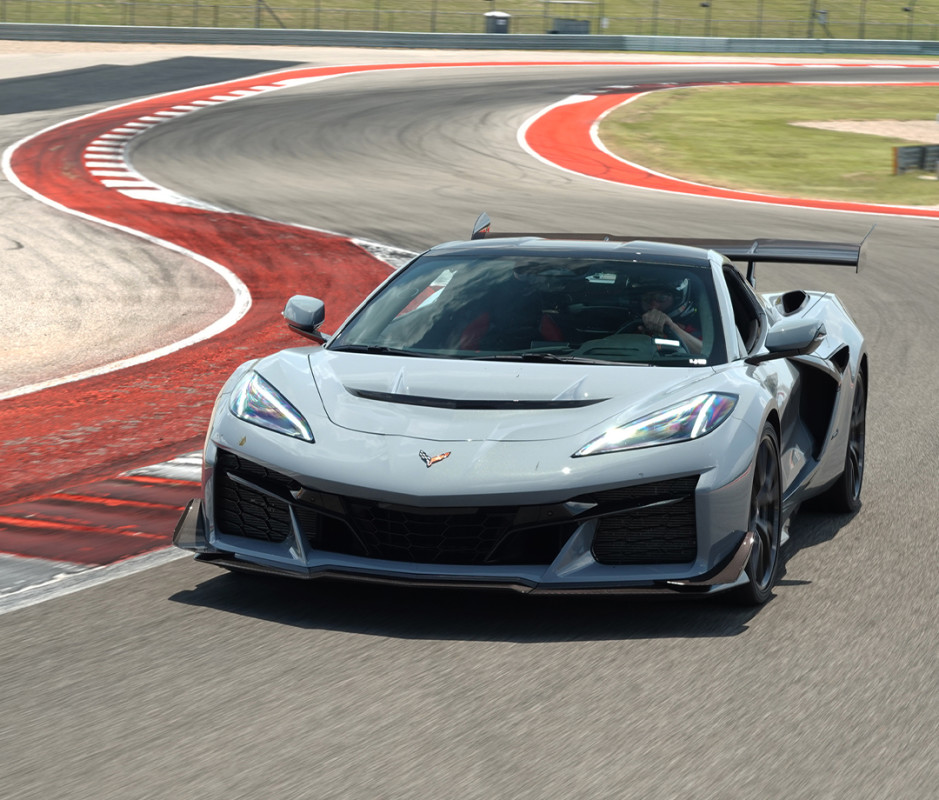I Drove the 2025 Corvette ZR1—Is It America's Latest Weapon of Mass Destruction?

Not too many cars make me nervous these days. A Bugatti Chiron Super Sport on narrow French country roads, maybe. Or a privately owned 1971 Porsche 911S museum piece—only because it’s privately owned. And any modern superbike, of course, like a Ducati with the power to weight ratio of a F1 race car, simply because of the imminent threat to loss of life and limbs.
And yet, the night before Chevy set me loose at Circuit of the Americas (COTA) in the new 1,064-horsepower Corvette ZR1 , the old butterflies started to set in. Nothing a brief afternoon session beforehand in a base Z51 Stingray couldn’t help, nor a few mezcal margaritas shortly thereafter—and yet, the prospect of unleashing hell from an unholy power plant built by General Motors just seemed hard to shake. Especially when a good friend and Pikes Peak record holder predicted I’d hit 190 miles per hour the next day. If so, that would be my new personal best, and by a wide margin.
And all in a Corvette, formerly the retired dentist’s car of the jorts, white New Balances, and fanny pack crew at cars and coffee shows. Now entirely, unavoidably, inescapably outgunning an entire industry as the most powerful car ever produced by a major American automaker.
Time to quell those nerves and slip on the helmet and Hans device, to discover whether Chevy cranked out the most maniacal machine available to the general public.
A Brief Introduction to F1’s American Racing Circuit

The afternoon beforehand helped to at least settle down some of the nerves coursing through my body, since Chevy made the smart call of giving the assembled media some time at COTA in the base Z51 Stingray. Exploring the surprisingly tricky and technical track in a somewhat similar car with less than half the horsepower set us up well for success the next day, even if I still broke above 140 miles an hour on the back straight repeatedly.
More importantly, COTA’s sheer size allows not just for crazy pace in a straight line, but also through the wide arcs of successive corner transitions, which require a ton of sacrificial apexes and mental tricks to hold the proper line. In the Z51, softer suspension and less responsive steering led to more slip and slide, in a session that eventually oiled up the Michelin Pilot Sport 4S tires enough to approach true drifty fun.
I took the next day far more seriously, even if we started out in a ZR1 equipped with the “base” FE8 package, which means the softer chassis with lower spring rates, forged wheels, and still PS4S tires. The cars also sported the ZTK aero kit, though, so a huge carbon wing out back plus a few other doodads all upped the downforce to provide a bit of stability as we acclimated to so much more power.
Even on the first lap, though, all my jitters entirely evaporated—other than lingering doubts about other drivers on the track with me. You simply never know with YouTubers and journo-saurs on the scene, but everybody held respectable pace as pro drivers bunched us up through the first round of lead-follow laps.
Related: I Drove the Best Mini-Supercar and Came to a Sad Conclusion

The radical difference in suspension and steering versus the Z51, plus the gargantuan 345mm wide rear tires, created so much more lateral grip that I probably stepped up to pace slower than necessary, really. I kept exploring the throttle pedal, too, since Chevy needed to figure out a host of clever electrical solutions to harness so much additional airflow from the largest pair of turbos ever bolted onto a mass-produced vehicle.
Despite electronic wastegates and turbo speed sensors, the ZR1 still takes a noticeable moment between full throttle and boost hitting for real—and despite the 828 lb-ft of torque, the eight-speed DCT’s gear ratios drop the LT7 engine out of the peak power band significantly.
Still, by the first 15-minute solo stint in the FE8 car, I wound up absolutely melting the PS4S tires again in the hot humid Texas temps. I started sliding around almost as much as in the Z51, but at higher speeds thanks to more aero and more grip, so I still managed to crack 170 miles an hour repeatedly on the back straight. Stomping the brake pedal afterward only put more heat into the tires, though, and I struggled to initiate rotation under trail braking before cranking back into a straight line and unleashing hell once again.
Getting Serious in the FEJ

Then we stepped up to the FEJ package, which adds stiffer springs, enhanced calibrations for the MagneRide dampers, steering, and brake-by-wire system, plus carbon wheels and legit Michelin Cup 2 R tires (the latter even with a new compound for the ZR1). Rolling out of the pits before even blending onto the track, the steering and chassis now revealed every inch of asphalt variability with newfound clarity. No more slip-and-slide, I figured.
Sure enough, after a warm up lap to get some heat into the rubber, by the third lead-follow lap I hit 181 miles an hour on the back straight. That’s the fastest I’ve ever driven a car, beating my previous record in a Lamborghini Revuelto by a not-insignificant 7 miles per hour. And I did so without hitting a corner quite right, as I struggled to sense the proper slip angle and max traction from the Cup 2 R tires, which communicate slightly less on the way to letting loose.
Sure enough, I found and exceeded the limit a few times, typically while arcing out wide and catching a bit of curbing with my outside wheels. But I spent the rest of the day chasing the high of that top speed, while consciously forcing my eyes up higher to avoid falling for COTA’s jedi mind tricks.
Related: F1 Workout: How to Train Like Alpine's Pierre Gasly

As I synced up my transitions, felt the edge on long sweepers, and tried to push the rear end down into harder squats earlier, the C8’s inherent mid-engine balance simply took what I doled out and asked for more, and more, and more.
Aerodynamics undoubtedly played a role in the fun, especially while braking as hard as humanly possible at the end of the long straight. And I quickly learned to stick with the ZR1 coupes on hand, rather than the convertibles that sacrifice interior headroom but also additional cooling. Don’t get me wrong, though, I’m not a serious person trying to set lap records: I still kept the air conditioning and ventilated seats blasting the whole time.
Most of the day, I struggled to get up past the high-170 mph range. But finally, by focusing on the tight hairpin leading to the back straight and then trusting the downforce to improve traction without ABS intervention, I spied 180 on the speedo once more. And that’s despite Chevy engineers claiming the engine might be down 5 to 10 percent power due to the ambient temps and humidity.
Absolute Absurdity in Automotive Form

Thankfully, the ZR1’s ECU allows for a little bit of overboost to compensate for the weather, up from 20 psi to more like 24 or 25. But that kind of engineering cleverness throughout the car only contributes to the ridiculousness. For example, the turbo speed sensors allow for a reduced margin of error versus a purely mechanical system, so the turbo vanes can get closer to max rotational speed before actually shearing off. Best of luck to tuners trying to coax out more power without blowing the engine, then.
Meanwhile, the ZTK package’s aero bits create gobs of downforce, but also contribute so much additional cooling responsibility that the engine can stay below 248 degrees to keep oil flowing between the tight tolerances of the crankshaft and connecting rods. In many ways, given the advances, it’s totally fair to think of the ZR1 as half of a Bugatti Veyron—just 20 years later, for one-fifth the price. And anyone can just go buy one.
But the Veyron had all-wheel-drive and was also terrifying in those early days of the hypercar revolution. So in some ways, the ZR1 almost seems too approachable. I left COTA with my ego searching for more reasons to justify those nerves from the night before. Instead, I concluded that anybody can just get in and drive this car, due to the advanced traction and stability control software—electronic nannies that I actually struggled to figure out how to turn fully off because of the C8’s infuriating user interface.
Without thumbing the interventions fully off, running over curbs at the wrong moment occasionally killed ignition, shoving weight onto the front axle and causing the only moments of tail shimmy the ZR1 ever displayed. But those split seconds of lameness only arrived while pushing as hard as possible on the most enormous racetrack in the United States.
In reality, given the insane level of power, that kind of computerized intervention is an absolute must. Precisely because of the dubious intelligence of selling something so patently absurd to the general public, given what we regularly witness from bros in their Mustangs and Hellcats, even Porsches and Lambos.

“I steal the Spider-Man line, ‘With great power comes great responsibility,’ because we knew going in this is a hell of a hammer just to let someone loose with on public roads,” chief engineer Josh Holder told me after the drive day wrapped up.
“But we all like juvenile behavior once in a while, it's pretty fun, brings a smile to your face. So we still leave all those features in. You can do a smoky burnout if you want to. You can do a donut if you want to. You can drift it if you want to. That's not the way to maximize performance on a racetrack, so we like to keep that availability there, but the settings we tune to are to maximize performance of the car.”
AIn reality, COTA might make every car seem slow, but for canyon carving or street racing, this ZR1 borders on bringing a tactical nuke to a fistfight, not a hammer. That kind of undeniable power demands respect, even if I no longer fear it. And hopefully the $200,000-plus price tag—after options—necessarily culls the herd of morons from buying this absolute weapon.
Because otherwise, Chevy will witness exactly what the engineers fear most: A viral wave of oversteer-y crashes after burnouts and donuts circling around on social media. Rather than the refined and restrained violence of true track performance, where anything as eminently powerful and capable as the ZR1 truly belongs.
2025 Chevrolet Corvette ZR1 Specs
- Engine: Twin-turbocharged 5.5L LT7 V8
- Transmission: 8-speed dual-clutch automatic
- Horsepower/Torque: 1,064 hp/828 lb-ft
- 0-60: 2.3 seconds
- Top Speed: 233 mph
- MPG: 15 city/20 highway
- Price: From $174,995
Related: Is This Streetfighter the Best Kawasaki Has Ever Produced?
Komentar
Posting Komentar